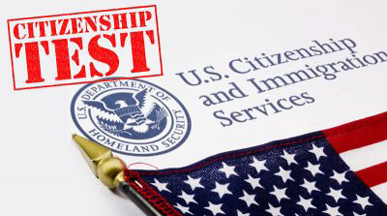WASHINGTON, D.C. (TIP)- Under the proposed changes, applicants would be asked to verbally describe three color photographs showing “ordinary usage scenery, such as daily activities, the weather or food,” according to a notice in the Federal Register by the U.S. Citizenship and Immigration Services. The current test asks applicants questions based on what they put on their application, called the N-400, to test their English-language skills. The proposed changes also would add multiple-choice questions to the civic portion of the test. Applicants must get six out of 10 civics questions correct to pass that section. The changes will undergo a trial-testing period for several months this year and, if adopted, take effect late next year.
WHAT TO KNOW
Proposed changes to the U.S. citizenship test would both revamp the exam’s speaking section to assess an applicants’ English-language proficiency and add multiple choice questions. Applicants would be asked to verbally describe three color photographs showing “ordinary usage scenery, such as daily activities, the weather or food.” The U.S. Citizenship and Immigration Services would perform a trial-testing period for several months this year and, if adopted, the changes would take effect late next year. Shaorui Li, chair of the Asian Association of Great Stony Brook and a member of the Three Village school board, said some members of the Asian Association are worried about the proposal. “It’s mainly people who are not fluent in English,” Li said. “For people like them, they are very concerned it will be difficult for any to get citizenship. Katherine Tichacek, a New York City regional spokeswoman for the agency, said in a statement: “In response to stakeholder feedback, U.S. Citizenship and Immigration Services is currently exploring trial-test options for a possible naturalization test redesign effort. USCIS will continue to engage stakeholder partners, including community-based organizations with experience in naturalization, and the agency will thoroughly review trial-test results and their impact on reducing barriers to naturalization before considering any permanent revisions to the naturalization test.”
